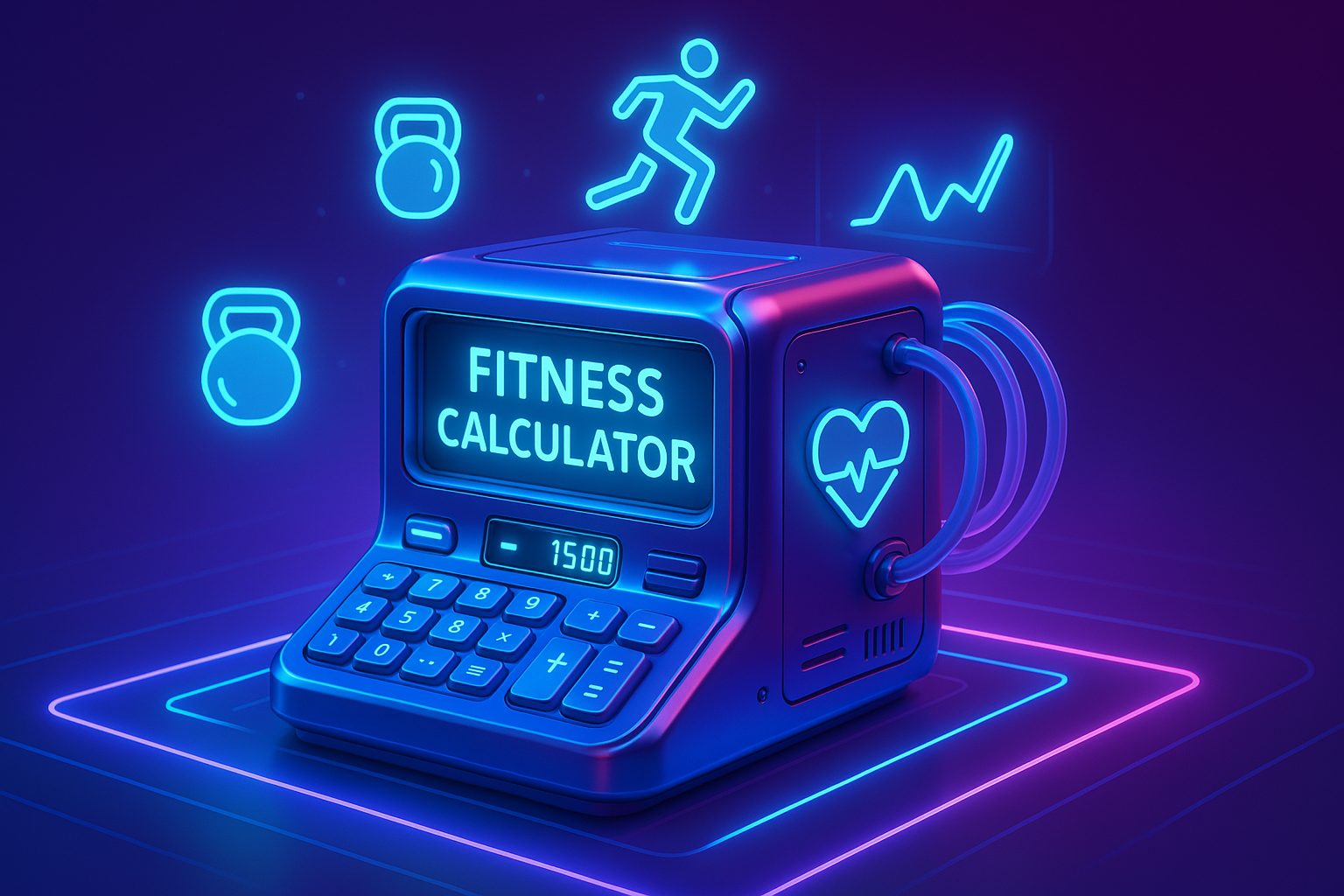Understanding the Power of TDEE and How to Use It
In the world of fitness and nutrition, the Total Daily Energy Expenditure (TDEE) is one of the most powerful yet often misunderstood tools. Whether you’re looking to lose weight, gain muscle, or simply understand how your body uses energy, knowing your TDEE is essential. Your TDEE is like a compass, guiding you toward your health and fitness goals by showing you exactly how many calories your body needs to function each day.
What if you could have a roadmap to fuel your body perfectly, knowing how many calories you should be eating based on your activity level? What if this tool could unlock a whole new level of understanding of how your metabolism works? It’s time to explore TDEE, break it down into digestible parts, and discover how you can leverage it for the results you’ve been striving for. In this article, we’ll dive into what TDEE is, how it’s calculated, and how you can apply this knowledge to your daily routine.
TDEE Calculator
What Is TDEE?
Total Daily Energy Expenditure, or TDEE, is the total number of calories your body needs to maintain all of its functions throughout the day, including basic metabolic processes (like breathing, digesting food, and circulating blood) and the energy you burn through physical activities.
Simply put, TDEE takes into account everything your body does, from the moment you wake up to the time you go to bed. This includes:
The energy needed to keep your organs working.
The energy spent during physical activity, whether you’re running a marathon, lifting weights, or simply walking to your car.
The thermic effect of food (TEF) – the energy your body uses to process and digest food.
The energy expended through non-exercise activity thermogenesis (NEAT), which refers to the calories burned during normal, everyday activities like walking around your house, typing on a keyboard, or fidgeting.
TDEE provides a comprehensive view of how much energy your body needs to function, which is a crucial piece of the puzzle when it comes to managing your weight, boosting fitness levels, or building muscle.
How Is TDEE Calculated?
Calculating your TDEE isn’t as complex as it may sound, and you can break it down into manageable steps. The key to calculating your TDEE lies in first understanding your Basal Metabolic Rate (BMR). Your BMR represents the number of calories your body needs to perform basic life-sustaining functions while at rest. It’s the foundation for calculating your TDEE.
Once you have your BMR, the next step is to factor in your activity level, as physical activity plays a huge role in how many calories your body burns. This is where things get interesting, because every person’s activity level is different.
Step 1: Calculating Your BMR
There are a few ways to calculate your BMR, but the most widely used formulas are the Mifflin-St Jeor Equation and the Harris-Benedict Equation. These equations take into account your age, sex, weight, and height to estimate how many calories your body burns at rest.
The Mifflin-St Jeor Equation is considered the most accurate for most people.
Step 2: Factor in Your Activity Level
Once you know your BMR, the next step is to multiply that number by a factor that represents your activity level. This will give you an estimate of your Total Daily Energy Expenditure.
Here are the activity levels and their corresponding multipliers:
Sedentary (little or no exercise): BMR × 1.2
Lightly active (light exercise or sports 1-3 days a week): BMR × 1.375
Moderately active (moderate exercise or sports 3-5 days a week): BMR × 1.55
Very active (hard exercise or sports 6-7 days a week): BMR × 1.725
Super active (very hard exercise, physical job, or training twice a day): BMR × 1.9
By multiplying your BMR by the appropriate activity factor, you’ll have your TDEE. This number represents the total calories your body needs to maintain its current weight based on your activity level.
Why TDEE Matters: A Game-Changer for Weight Management and Fitness
Understanding your TDEE is a game-changer for anyone serious about their health and fitness goals. It provides you with a clear picture of how many calories your body needs to function effectively and efficiently. Armed with this knowledge, you can make smarter decisions about your diet and exercise routine.
TDEE for Weight Loss
If weight loss is your goal, knowing your TDEE is essential for creating a sustainable calorie deficit. To lose weight, you need to consume fewer calories than your body burns. By calculating your TDEE and eating slightly fewer calories than this number, you’ll trigger fat loss while still providing your body with enough energy to function properly.
Generally, a safe and effective weight loss strategy involves creating a calorie deficit of about 500-1,000 calories per day. This typically leads to a weight loss of 1-2 pounds per week, which is considered a healthy rate.
However, it’s crucial to avoid cutting too many calories and going below your BMR. This can lead to muscle loss, decreased energy levels, and other health issues. By knowing your TDEE, you can find the right balance between fueling your body for energy and creating a deficit for fat loss.
TDEE for Muscle Gain
If you’re looking to gain muscle, you’ll want to eat a calorie surplus, meaning you consume more calories than your body burns in a day. Knowing your TDEE helps you figure out how much of a surplus you need to build muscle without gaining unnecessary fat.
For muscle gain, aim to eat around 250-500 calories above your TDEE. This provides your body with the extra energy it needs to repair and build muscle tissue after workouts. Over time, as you continue to train and eat more than your TDEE, you’ll see progress in terms of muscle growth and strength.
TDEE for Weight Maintenance
If you’re happy with your current weight and want to maintain it, knowing your TDEE is crucial for balancing your calorie intake with your energy expenditure. By eating roughly the same number of calories as your TDEE, you’ll maintain your current weight and avoid gaining or losing fat.
Many people find it difficult to maintain their weight because they don’t realize how much their activity levels fluctuate throughout the week. Having an accurate understanding of your TDEE can help you make adjustments to your eating habits and exercise routine to stay on track with your weight goals.
TDEE and Activity Levels: The Power of Movement
One of the most important factors that influence your TDEE is your level of physical activity. While some people may have naturally high TDEEs because of their active jobs or intense workout routines, others may need to consciously incorporate more physical activity to increase their calorie burn.
Exercise and physical activity play a vital role in optimizing your TDEE. Regular exercise can increase muscle mass, which in turn raises your BMR and helps you burn more calories at rest. Activities like strength training, aerobic exercise, and even non-exercise movements like walking and standing can help boost your TDEE, making it easier to achieve your fitness and weight management goals.
If you’re looking to elevate your TDEE, start by adding more movement into your daily routine. Even small activities, like taking the stairs instead of the elevator or walking instead of driving short distances, can add up over time and contribute to a higher calorie burn.
TDEE and the Thermic Effect of Food (TEF)
Another factor that influences TDEE is the Thermic Effect of Food (TEF), which refers to the energy your body uses to digest, absorb, and metabolize the food you eat. The TEF can vary based on the type of food you consume. Protein, for example, has a higher thermic effect than carbohydrates or fats, meaning your body burns more calories digesting protein-rich foods.
Incorporating more high-protein foods into your diet can slightly increase your TDEE by raising your energy expenditure during digestion. This is just one of many reasons why protein is a vital macronutrient for those looking to lose weight or build muscle.
How to Apply TDEE to Your Goals
Once you have your TDEE, the next step is to use it strategically to align with your health and fitness goals. Whether you want to lose weight, build muscle, or simply maintain your current weight, TDEE is a powerful tool that can help you achieve results efficiently and sustainably.
To apply TDEE to your goals, first identify what you want to achieve. From there, make adjustments to your calorie intake based on your desired outcome. For weight loss, aim for a calorie deficit. For muscle gain, focus on a calorie surplus. And for maintenance, eat the same number of calories as your TDEE.
Remember, TDEE is not a one-size-fits-all number. Your activity levels, lifestyle, and goals will evolve over time, so it’s important to reassess your TDEE periodically and adjust your calories and exercise routine as needed.
Embrace the Power of TDEE
Understanding your TDEE is one of the most empowering things you can do for your health and fitness journey. It gives you the knowledge you need to make informed decisions about your diet, exercise, and overall lifestyle. By calculating your TDEE and using it to guide your calorie intake, you can unlock the full potential of your body and achieve your goals faster and more effectively.
So, whether you’re looking to lose weight, build muscle, or maintain your current physique, embrace the power of TDEE. This knowledge is a game-changer, and with it, you’ll be able to fuel your body, optimize your workouts, and stay on track to achieve the results you’ve always dreamed of.




